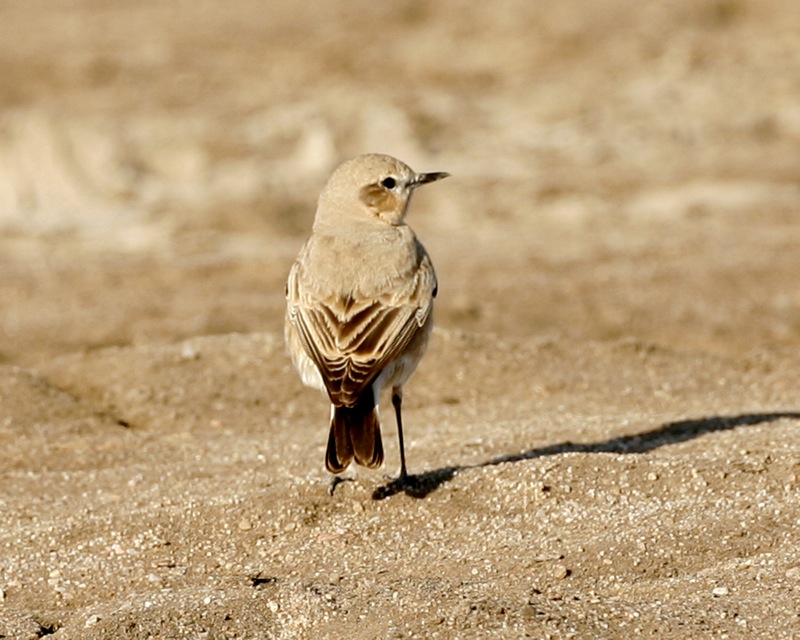Isabelline wheatear
(Oenanthe isabellina)

Description
The isabelline wheatear (Oenanthe isabellina) is a small passerine bird that was formerly classed as a member of the thrush family Turdidae,but is now more generally considered to be an Old World flycatcher in the family Muscicapidae.It is a migratory insectivorous bird.Its habitat is steppe and open countryside and it breeds in southern Russia and central Asia to northern Pakistan,wintering in Africa and northwestern India.It is a very rare vagrant to western Europe.In colouring it resembles a female northern wheatear but it is larger at 15–16.5 centimetres (5.9–6.5 in) in length,more upright and more tawny in colour,and has more black on its tail.The term isabelline refers to the parchment-like colouration.The axillaries and underwing coverts are white,whereas in the commoner bird they are mottled with grey.The sexes are similar.Male and female isabelline wheatear are similar in appearance.The upper-parts are a pale sandy brown with an isabelline tinge (isabelline is a pale grey-yellow,fawn,cream-brown or parchment colour).The lower back is isabelline and the rump and upper tail-coverts are white.The tail feathers are brownish-black with a narrow edge and tip of buff and a large white base.In the outer tail feathers this occupies more than half the length of the feather but in the central feathers it is about one third.There is an over-eye streak of creamy white and the ear-coverts are pale brown.The chin is pale cream and the throat pale buff.The breast is sandy or isabelline buff and the belly creamy white.The under tail-coverts are pale buff and the under wing-coverts and axilliaries white with dark bases.The wing feathers are brownish-black,tipped and edged with creamy buff.The beak,legs and feet are black and the irises are brown.At a length of 16.5 centimetres (6.5 in) it is rather larger and also paler in colour than the northern wheatear (Oenanthe oenanthe).The beak is longer than that bird and the ear-coverts are paler but otherwise the birds are very similar in appearance and could be confused.The plumage is moulted twice a year,there being a complete moult in late summer and a partial moult of the body feathers in mid-winter.
Taxonomic tree:







